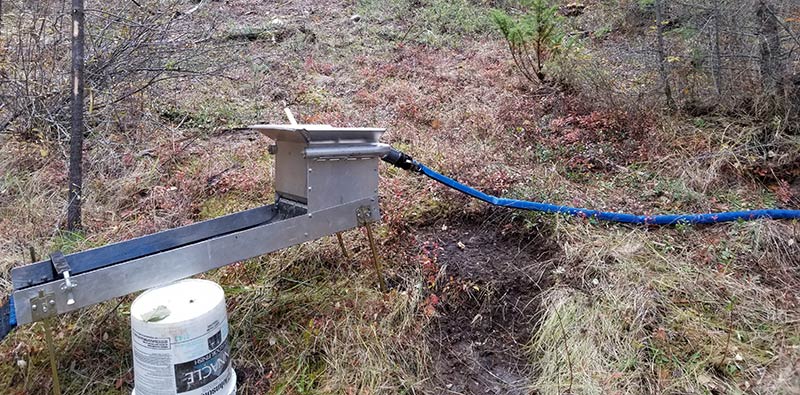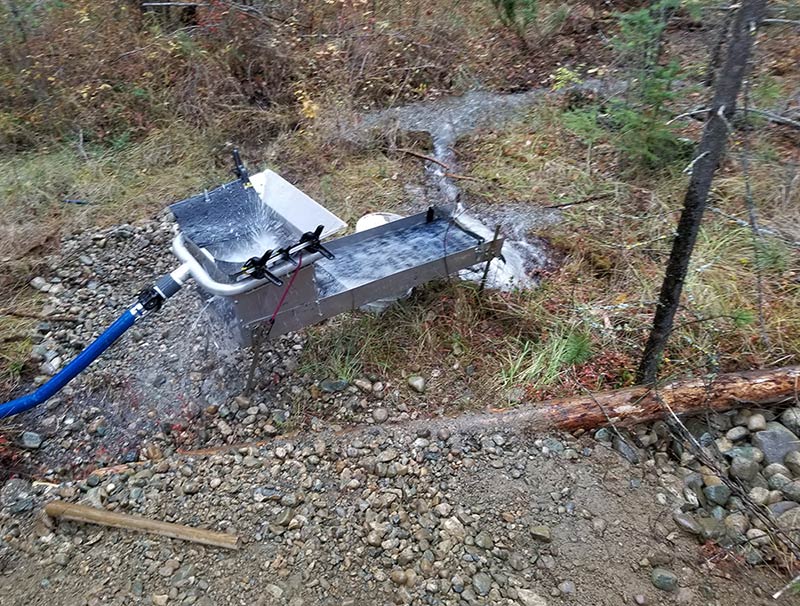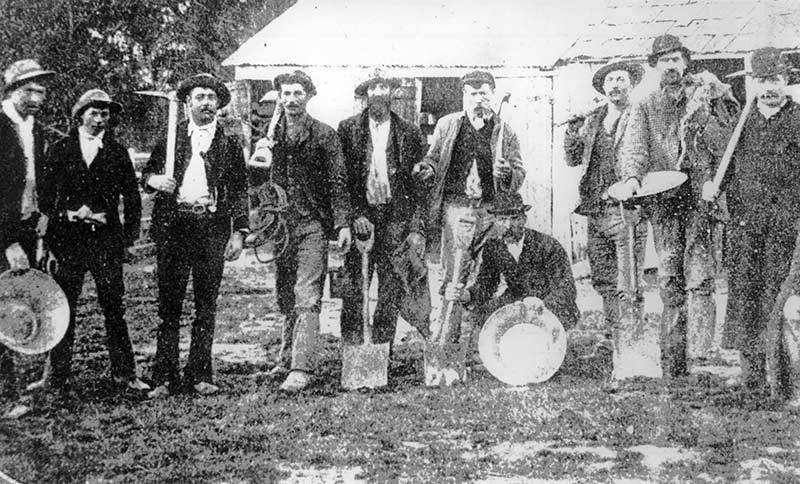Introduction
Gold mining has long been a popular activity, with people seeking to strike it rich by finding the elusive yellow metal. While modern methods of gold mining often involve large-scale operations and heavy machinery, there are still ways for small-scale miners and hobbyists to get in on the action. One such method is using a highbanker, which is a portable sluice box that allows miners to process large amounts of material quickly and efficiently.
A highbanker works by using water to wash gold-bearing material through a series of riffles, which trap the heavier gold particles while allowing lighter material to wash away. While the setup and operation of a highbanker can vary depending on the location and material being mined, there are some general guidelines and best practices that can help miners maximize their chances of success. In this article, we will explore how to set up and operate a high banker for gold mining, including adjusting the angle of the sluice and tips for efficient operation. We will also cover some important safety considerations that all miners should be aware of.
Setting Up Your Highbanker
Before setting up your highbanker, it’s important to choose the right location. Look for an area with good water flow and access to a reliable source of water. You’ll also want to make sure that you have permission to mine in the area, and that you’re not trespassing on private property or protected land.
Once you’ve found a suitable location, it’s time to assemble and set up your high banker. This will typically involve attaching the various components of the highbanker together, such as the sluice box, hopper, and water pump. Follow the manufacturer’s instructions carefully to ensure that everything is put together correctly.
Next, it’s important to make sure that the water is flowing at a consistent rate. Too much water can cause material to wash away too quickly, while too little water can result in inefficient processing. The larger the highbanker the larger water pump will be required.
The length of your sluice box will help determine the amount of material it can handle, and thus the size of the water pump required. A general rule of thumb is that you need at least 100 gallons per hour (GPH) of water flow for every foot of sluice box length. For example, if your sluice box is 4 feet long, you will need a water pump that can deliver at least 400 GPH of water flow.
The width of your sluice box will also play a significant role in the size of the water pump you need. A wider sluice box requires more water flow to move the material through the box effectively. As a rule of thumb, you should aim for a water flow rate of at least 200 GPH for every inch of sluice box width. For example, if your sluice box is 12 inches wide, you will need a water pump that can deliver at least 2400 GPH of water flow.
One key factor in the setup of your high banker is the angle of the sluice box. The sluice needs to be angled correctly in order to allow the gold to settle into the riffles, while still allowing lighter material to wash away. The ideal angle can vary depending on the material being processed and the water flow, but a general guideline is to aim for an angle of around 5-15 degrees.
It’s also important to make sure that the highbanker is stable and level. Uneven ground or wobbly legs can cause the highbanker to shift or tip over, which can be dangerous and can also result in lost material.
Once your high banker is set up and running smoothly, you can start feeding material into the hopper and processing it through the sluice box. Keep an eye on the water flow and adjust as necessary to ensure that the material is being processed efficiently. In the next section, we’ll explore how to adjust the angle of the sluice box for optimal performance.
Adjusting the Angle of Your Sluice
The angle of the sluice box is one of the most important factors in the performance of your highbanker. A properly angled sluice box will allow the gold to settle into the riffles and be trapped, while lighter material washes away. However, if the angle is too steep or too shallow, the gold may not be properly trapped, and you may end up losing valuable material.
To adjust the angle of your sluice box, you’ll need to experiment with different settings and observe how the material flows through the box. A good starting point is to aim for an angle of around 5-15 degrees, but this can vary depending on the material being processed and the water flow. Another good guideline to follow is for every foot length of sluice box you drop the front of the sluice box by roughly 1 inch.
Here is a link to a great study on sluicebox configurations by James F. Hamilton published by the University of British Columbia.
To test the angle, start by running some material through the high banker and observing how it flows through the sluice box. If the angle is too steep, the material will wash away too quickly, and you may see gold particles being carried downstream. If the angle is too shallow, the material may not be properly processed, and you may see gold particles settling on top of the riffles instead of being trapped.
To adjust the angle, raise or lower the front of the sluice box a little at a time, using shims or other materials to achieve the desired angle. Highbanker Adjustable legs are the easiest method. Test the angle again by running more material through the highbanker and observing how it flows through the sluice box. Continue adjusting the angle until you find the optimal setting for your specific location and material.
It’s important to remember that the ideal angle can vary depending on a variety of factors, and it may take some trial and error to find the right setting. Be patient and observant, and don’t be afraid to experiment with different angles until you find what works best for you.
In the next section, we’ll explore some tips and tricks for efficient high banker operation.

Highbanker Operation
Once you’ve set up your highbanker and adjusted the angle of the sluice box, it’s time to start processing material. Here are some tips for efficient highbanker operation:
Feed material evenly: Make sure to feed material into the hopper at a consistent rate to ensure that it’s being processed efficiently. Avoid overloading the hopper or allowing it to run dry.
Use classifiers: Pre-sorting your material with classifiers can help remove larger rocks and debris that may clog the sluice box. This can help ensure a smoother and more efficient processing operation but is also time consuming. Many high bankers do come with built in grizzly bars on the hopper.
Monitor water flow: Keep an eye on the water flow to make sure that it’s consistent and that the material is being washed through the sluice box at the right rate. Adjust the water flow as necessary to maintain optimal processing.
Clean out the sluice box regularly: Over time, material can build up in the riffles and prevent the gold from settling properly. Make sure to clean out the sluice box regularly to maximize your recovery.
By following these tips, you can maximize your chances of success when using a highbanker for gold mining. In the next section, we’ll explore some additional tips and tricks for dealing with heavy minerals and black sand.
Tips and Tricks
When using a highbanker for gold mining, there are a few additional tips and tricks that can help improve your efficiency and recovery. Here are some things to keep in mind:
Dealing with heavy minerals and black sand: Heavy minerals like magnetite and black sand can be a challenge to process through a highbanker, as they can clog the riffles and prevent the gold from settling properly. To deal with these heavier materials, consider using a separate magnet to remove the magnetite and black sand before processing the rest of your material through the high banker. Some miners glue a magnet at the base of their hopper.
Be mindful of environmental impacts: Gold mining can have a significant impact on the environment if not done responsibly. Make sure to follow all local regulations and guidelines for mining, and be mindful of your impact on the land and wildlife in the area. Leave the area in the same condition you found it in. Do some research on reclamation and keep best practices in mind for the areas you disturb.
Keep records: Keeping detailed records of your mining operation can help you track your progress and identify areas for improvement. Keep track of the amount of material you’re processing, the amount of gold you’re recovering, and any adjustments you make to your setup or operation. This may be a requirement if you are a claim owner.
By using these tips and tricks, you can improve your efficiency and recovery when using a highbanker for gold mining. However, it’s important to always prioritize safety and responsible mining practices. In the next section, we’ll explore some important safety considerations to keep in mind when using a highbanker.
Safety Considerations
Using a highbanker for gold mining can be a fun and rewarding activity, but it’s important to always prioritize safety when operating equipment near water. Here are some important safety considerations to keep in mind:
Wear protective gear: Always wear appropriate protective gear including eye protection. This can help prevent injuries in case of an accident as mining is usually done in remote areas where medical intervention could be hours away. You will usually get quite wet operating a highbanker so consider gloves, chest waiters, or rain gear.
Be prepared for accidents: Make sure you are prepared for accidents such as fuel spills and have a spill kit on hand. Additionally it is good practice and sometimes law that you store fuel far from the water source and bring your water pump to your fuel when you need to refill it.
Be aware of your surroundings: Make sure to be aware of your surroundings at all times, including any hazards like rocks, logs, or fast-moving water. Stay away from steep banks or areas with unstable ground.
Use equipment properly: Make sure to use your highbanker and any other equipment properly, following all manufacturer’s instructions and safety guidelines. Never use equipment that is damaged or malfunctioning.
Respect wildlife and the environment: Minimize your impact on the environment and be respectful of the wildlife in the area. Don’t disturb animal habitats or leave behind trash or other debris.
By following these safety considerations, you can help ensure a safe and enjoyable gold mining experience. Remember to always prioritize safety and responsible mining practices, and have fun! In the next section, we’ll summarize the key points of using a highbanker for gold mining.
Conclusion
Using a highbanker for gold mining can be a fun and rewarding activity, but it’s important to approach it with the right mindset and knowledge. By following the steps outlined in this article, you can set up and operate your highbanker for optimal efficiency and recovery.
Remember to choose the right location, regulate water flow, and adjust the angle of the sluice box for optimal performance. Use classifiers to pre-sort your material if necessary, clean out the sluice box regularly, and be mindful of your environmental impact. And, most importantly, prioritize safety at all times.
If you are looking for a high banker check out the selection HERE
Gold mining can be a challenging and unpredictable activity, but it can also be a great way to get outdoors, explore new places, and potentially strike it rich. By following these tips and tricks, you can maximize your chances of success and have a safe and enjoyable mining experience.



